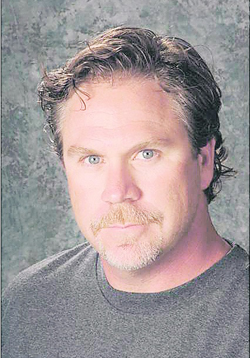
| ||||||
So there I was at Oakwood in a level one yoga class. My body is not overburdened by flexibility, but I was doing better than I had remembered at the "being present" part of the practice. This experience caused me to reflect on different activities we can practice that are associated with psychological health. Here is a review of the recent research on mindfulness and psychological health.
So, what is mindfulness? Mindfulness is an awareness that comes from paying attention. It is one type of meditation practice; the practice of noticing what is going on in the present moment. This is nothing new. In fact, the practice of attending to the moment is thousands of years old. The recent research on the effects of this practice is new and quite compelling.
One of the first therapies using mindfulness was developed by Dr. Kabat-Zine, a professor at U Mass Medical School, and is called Mindfulness Based Stress Reduction (MBSR). This therapy was originally used for people with chronic physical pain that failed to be managed by the invasive and medication based therapies of western medicine. Thirty years old, this therapy has shown remarkable results in dealing with managing stress reactivity, pain, anxiety, and depressive symptoms.
One of the by-products of paying attention is a state of clarity. Remember back to when you were a kid and you were climbing a tree. You were focused on every turn and twist of the branches. You were in the moment noticing when the branches were too thin for you to go any higher. With modern brain scans we can identify the brain functions of this type of focus and clarity. They are remarkably similar to the state of brain activity that mediation practitioners get into when they practice meditation.
Very often in couple therapy, clients and I spend time talking about how one partner doesn't see or notice what the other is doing. After a conversation, we find out that the person in question is not very practiced at noticing anything. With a few homework assignments around noticing any and all things, they start to see their partner in a new way. The problem is not with the partner, it is with the practice of noticing.
There is a newly published book entitled, The Art and Science of Mindfulness by Dr. Shauna Shapiro. This book collects the western research into one place for the first time. This is a book designed for practitioners, but I believe it can inform the rest of us.
The three pillars of MBSR are: 1) Formal meditation practice, 2) Informal meditation - this consists of taking deep and conscious breaths throughout the day as many times as you can. It could be hundreds of times a day you notice and take a conscious breath, 3) Yoga or stretching - this gets you noticing your body and what it can and cannot do. The data on these practices suggests that if you participate in these focusing and attending activities you will find clarity and mental focus to be more available to you. Give it a try and get your kids outside climbing some trees.
Reach the reporter at:
Copyright
